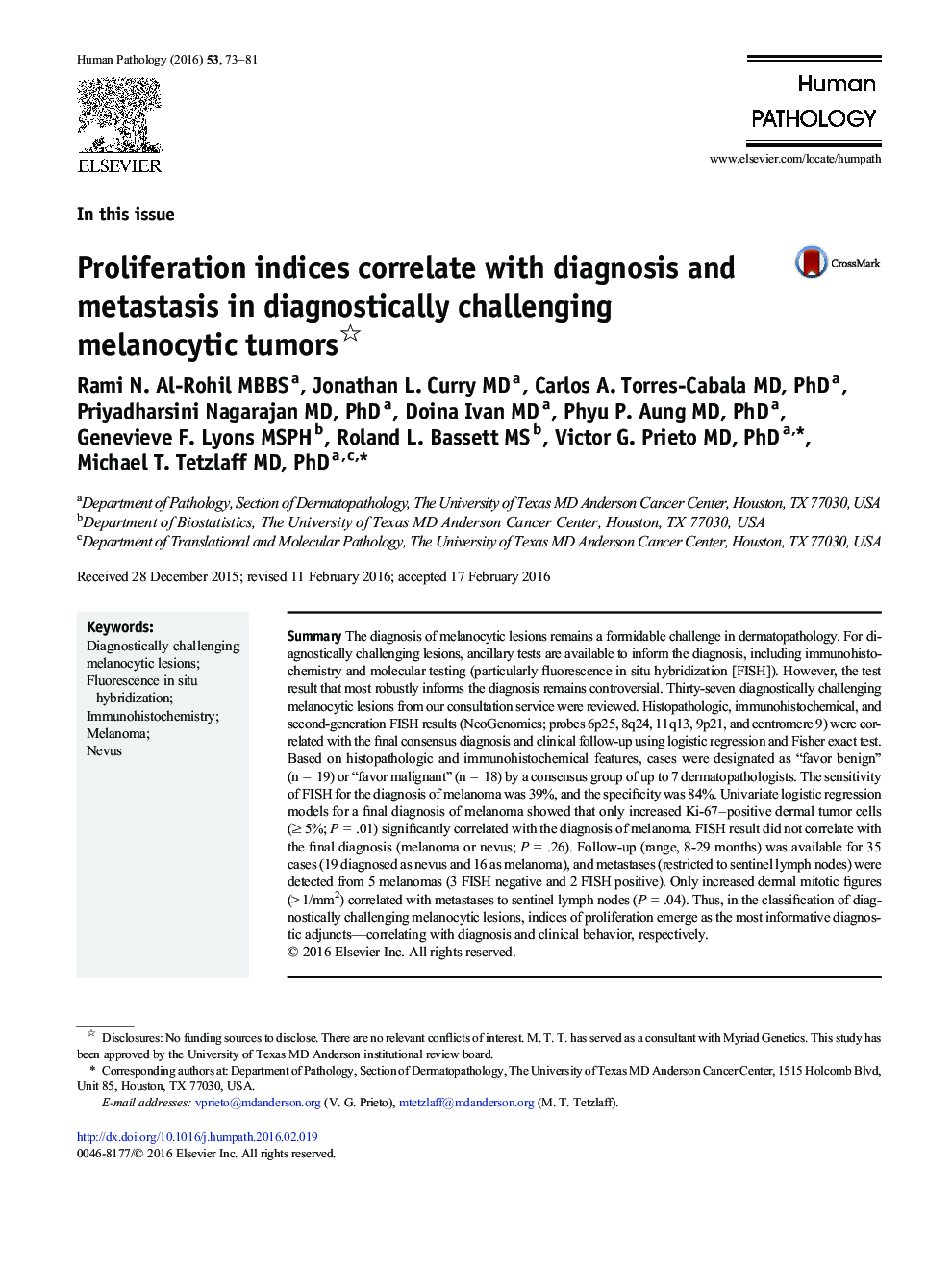| کد مقاله | کد نشریه | سال انتشار | مقاله انگلیسی | نسخه تمام متن |
|---|---|---|---|---|
| 4132363 | 1606657 | 2016 | 9 صفحه PDF | دانلود رایگان |
SummaryThe diagnosis of melanocytic lesions remains a formidable challenge in dermatopathology. For diagnostically challenging lesions, ancillary tests are available to inform the diagnosis, including immunohistochemistry and molecular testing (particularly fluorescence in situ hybridization [FISH]). However, the test result that most robustly informs the diagnosis remains controversial. Thirty-seven diagnostically challenging melanocytic lesions from our consultation service were reviewed. Histopathologic, immunohistochemical, and second-generation FISH results (NeoGenomics; probes 6p25, 8q24, 11q13, 9p21, and centromere 9) were correlated with the final consensus diagnosis and clinical follow-up using logistic regression and Fisher exact test. Based on histopathologic and immunohistochemical features, cases were designated as “favor benign” (n = 19) or “favor malignant” (n = 18) by a consensus group of up to 7 dermatopathologists. The sensitivity of FISH for the diagnosis of melanoma was 39%, and the specificity was 84%. Univariate logistic regression models for a final diagnosis of melanoma showed that only increased Ki-67–positive dermal tumor cells (≥ 5%; P = .01) significantly correlated with the diagnosis of melanoma. FISH result did not correlate with the final diagnosis (melanoma or nevus; P = .26). Follow-up (range, 8-29 months) was available for 35 cases (19 diagnosed as nevus and 16 as melanoma), and metastases (restricted to sentinel lymph nodes) were detected from 5 melanomas (3 FISH negative and 2 FISH positive). Only increased dermal mitotic figures (> 1/mm2) correlated with metastases to sentinel lymph nodes (P = .04). Thus, in the classification of diagnostically challenging melanocytic lesions, indices of proliferation emerge as the most informative diagnostic adjuncts—correlating with diagnosis and clinical behavior, respectively.
Journal: Human Pathology - Volume 53, July 2016, Pages 73–81
